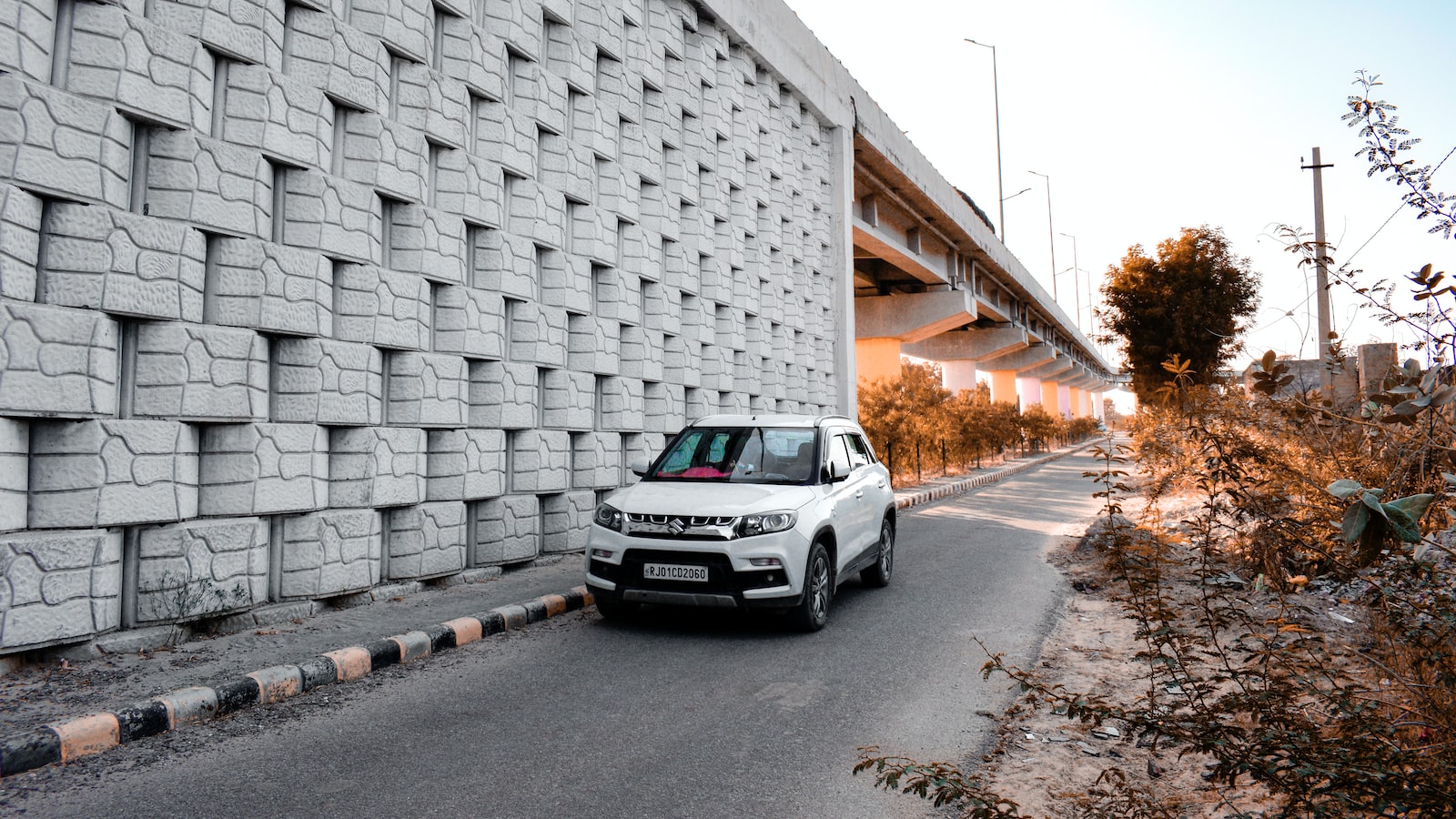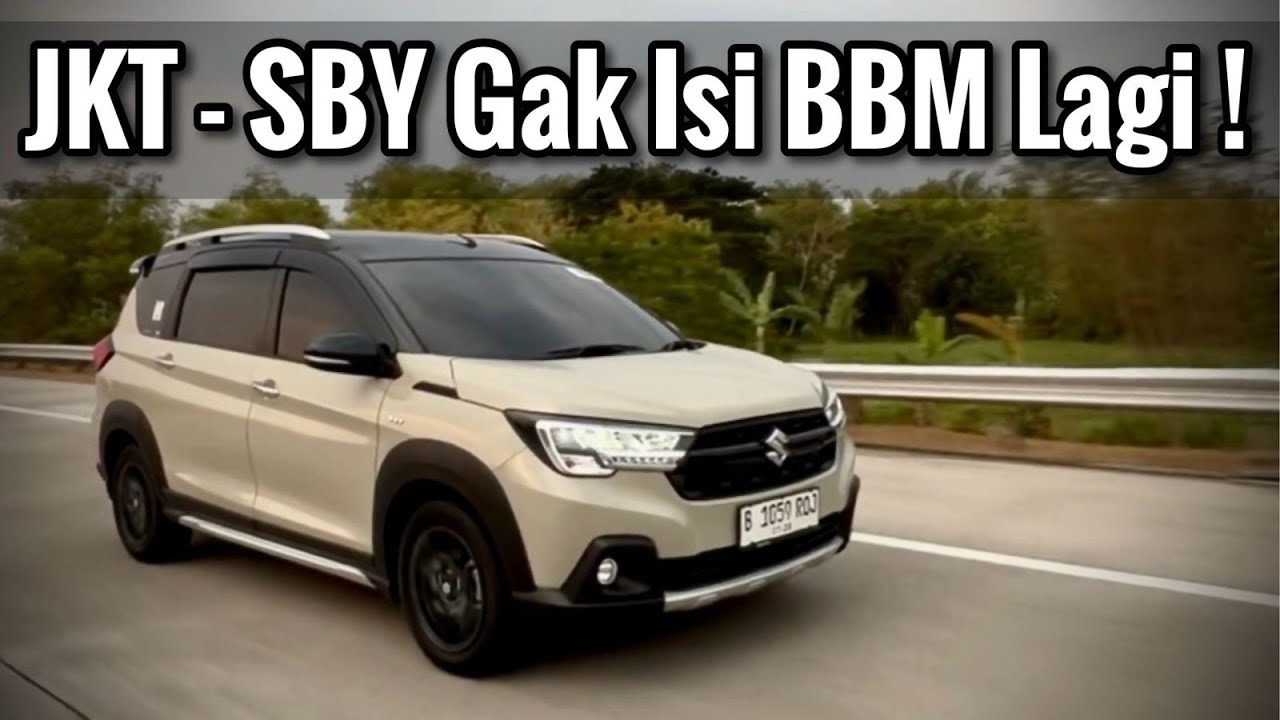Title: "SUZUKI XL7 Smart Hybrid Fuel Indicator Seems to Be Malfunctioning"
Introduction:
Welcome to our blog post, where we delve into the fascinating topics discussed in the YouTube video titled "SUZUKI XL7 Smart Hybrid Indikator Bensin Seakan Gak Berfungsi" (translation: "SUZUKI XL7 Smart Hybrid Fuel Indicator Seems to Be Malfunctioning"). In this video, Motomobi, a renowned automotive channel, explores the history and unique features of the Suzuki XL7 Smart Hybrid.
The Suzuki XL7 is a crossover based on the MPV design and stands as the only nearly hybrid-powered crossover available for purchase worldwide. One of its standout features is its ability to travel from Jakarta to Surabaya, a significant distance in Indonesia, with just one tank of fuel. Motomobi provides an engaging and informative analysis of this smart hybrid marvel on their channel.
Suzuki has always been known for creating vehicles that defy competition and set their own standards. Just like the iconic Jimny, a compact SUV with no rivals in Indonesia at the time, the Suzuki XL7 follows the same path of uniqueness. While other SUVs boast large, fuel-guzzling engines, the XL7 offers a smaller, more efficient engine paired with a compact body. However, Suzuki’s penchant for differentiation comes into play as the second-generation XL7 is seen to have dropped a class from its predecessor.
Originally introduced in 1998 and arriving in Indonesia in 2003, the first-generation XL7 had a distinctive SUV appearance, resembling the Grand Escudo, with a V6 engine and a generous seating capacity of seven passengers. However, its high price tag and lack of all-wheel drive limited its popularity. Unfortunately, Suzuki did not release a second-generation XL7 in Indonesia, despite its larger design and enhanced features, leaving fans longing for its return.
Unexpectedly, in 2020, Suzuki Indonesia reintroduced the XL7. Although initially perceived as a pure SUV, it was later revealed as a crossover built upon an MPV foundation. Despite the name change and shift in class, the Suzuki XL7 Hybrid seems to fulfill the requirements of Indonesian consumers who seek a fuel-efficient option. The video provides firsthand evidence of the Smart Hybrid’s capability, as it embarks on a 700-kilometer journey from Jakarta to Surabaya with just one tank of fuel, without refueling.
Join Motomobi and Fitra Eric’s channels to witness their personal experience and review of the Suzuki XL7. From conquering steep hills to enduring dusty terrains, their exploration illuminates the durability, performance, and fuel efficiency of this remarkable vehicle.
Stay tuned as we dive deeper into the compelling aspects of the Suzuki XL7 in this captivating blog series.
– Introduction: Unveiling the History and Uniqueness of the Suzuki XL7

The Suzuki XL7 is a unique crossover model that is based on an MPV design. It stands out from other crossovers due to its almost hybrid-like engine, making it a one-of-a-kind vehicle in the world. You’ll be amazed to know that the XL7 can travel from Jakarta to Surabaya with just one full tank of fuel. This Smart hybrid feature sets it apart from its competitors.
Now, let’s dive into the intriguing history of the Suzuki XL7. Suzuki has always been known for creating vehicles that have no competition or are simply in a league of their own. Take the Jimny, for example. It was the pioneer of compact SUVs and had no rivals in Indonesia at the time. While other SUVs had large, fuel-consuming engines, the Jimny came with a small engine and a compact body. However, Suzuki’s uniqueness and desire to be different led to a shift in class for some of their models. For instance, the Suzuki Baleno, when it was first introduced in 1996, had the same class as the Civic, Corolla, or Lancer. But now, it has scaled down to be on par with the Yaris or Jazz. This fascinating phenomenon also applies to the Suzuki XL7, a crossover that was strongly associated with SUV characteristics. Not only is the XL7 a crossover, but it also has a resemblance to a SUV, specifically the Grand Escudo.
– From SUV to Crossover: Exploring the Evolution of the Suzuki XL7

The Suzuki XL7 has evolved from an SUV to a crossover, and its history is quite unique. Suzuki has always been known for creating cars that are in a league of their own, just like the iconic Jimny, which was a pioneer in the small SUV market. While other SUVs boasted big engines and high fuel consumption, the Jimny came with a small engine and compact body. Similarly, the Suzuki Baleno, initially released in 1996, was designed to compete with the likes of Civic, Corolla, and Lancer. But Suzuki took a different approach and downgraded its class, making it comparable to the Yaris or Jazz.
The first generation of the Suzuki XL7 was introduced in 1998 and arrived in Indonesia in 2003. It had a more SUV-like appearance, resembling the Grand Escudo, and could accommodate 7 passengers. However, being a V6-powered SUV with a 2500cc engine, it was considered expensive for the Indonesian market. As a result, it didn’t gain much popularity, and Suzuki did not release a second generation in Indonesia. Interestingly, the second generation of the XL7 was launched internationally in 2006, featuring a larger body compared to its predecessor.
In a surprising turn of events, Suzuki reintroduced the XL7 to the Indonesian market in 2020. However, this time it took on a different form. Although it was initially thought to be a pure SUV, it turned out to be a crossover built on an MPV platform. The new XL7 had shed its prestigious name and taken on a more affordable and fuel-efficient approach. This unique offering from Suzuki catered to the needs of the Indonesian market, providing a solution for those who desired a more economical and fuel-efficient vehicle. In fact, it was put to the test by Motomobi, who drove the XL7 from Jakarta to Surabaya, a distance of 700 km, on just one tank of fuel, proving its impressive fuel efficiency.
– The Smart Hybrid Advantage: Experiencing the Fuel Efficiency of the Suzuki XL7

The Suzuki XL7 is a revolutionary crossover that combines the best features of an MPV and a hybrid vehicle, offering a fuel efficiency unlike any other in the world. With its smart hybrid technology, this vehicle can travel from Jakarta to Surabaya on just one tank of fuel, making it an ideal choice for those seeking an eco-friendly and cost-effective option.
Suzuki has a history of creating unmatched vehicles, and the XL7 is no exception. Just like the iconic Jimny, which pioneered the compact SUV segment, the XL7 stands out with its unique design and features. While other SUVs may have larger engines and higher fuel consumption, the XL7 breaks the mold by offering a smaller engine and body size without compromising on performance.
In the past, Suzuki has been known to push boundaries and redefine vehicle classes. The Suzuki Baleno, for example, was initially launched as a high-end sedan that rivaled the likes of Civic, Corolla, and Lancer. However, the XL7 introduces a shift in class, now targeting cars like the Yaris and Jazz. This decision to downsize reflects Suzuki’s commitment to meeting the needs of Indonesian consumers while providing exceptional value for their money.
The XL7’s first generation, initially introduced in 1998 and brought to the Indonesian market in 2003, was more SUV-like than a traditional crossover. However, due to its high price point and lack of 4×4 capabilities, it didn’t gain widespread popularity. Despite this, the XL7’s second generation, which debuted in 2006 with a larger body, remained unseen in Indonesia until 2020. The 2020 XL7 marks a shift in strategy for Suzuki, as they have reimagined the vehicle as a crossover built on an MPV platform, offering the advantages of both worlds.
One of the standout features of the XL7 is its fuel efficiency, thanks to its hybrid technology. A direct result of Suzuki’s unique approach to downsizing, this vehicle offers excellent mileage, allowing you to travel from Jakarta to Surabaya, a distance of 700 kilometers, on a single tank of fuel. To see the proof of this exceptional fuel economy, be sure to check out the videos on Om Mobi and Fitra Eric’s channels, where they put the XL7 to the test and showcase its impressive capabilities.
In addition to its remarkable fuel efficiency, the XL7 has been put through its paces on challenging terrains by automotive enthusiasts like Fitra Eric and Om Mobi. These experts have taken the XL7 up steep hills and off-road, demonstrating its durability and versatility. Despite the rough terrain, the XL7 has proven itself as a reliable and capable vehicle.
Overall, the Suzuki XL7 offers a one-of-a-kind driving experience, combining the best features of an MPV and a hybrid vehicle. With its smart hybrid technology, exceptional fuel efficiency, and impressive performance, the XL7 is a standout in its class. Whether you’re seeking a fuel-efficient option for daily commutes or looking to embark on adventurous journeys, the XL7 is sure to exceed your expectations. So, why not experience the smart hybrid advantage of the Suzuki XL7 for yourself?
– Reviewing the Suzuki XL7: Real-Life Testimonials and Performance Insights

The Suzuki XL7 is a crossover that is based on an MPV, making it the only crossover with hybrid-like features in the world. One outstanding feature of the XL7 is its ability to travel from Jakarta to Surabaya with just one tank of fuel. This efficiency is made possible by the Suzuki Excel 7 Smart hybrid technology.
Let’s delve into the history of the Suzuki XL7. Suzuki has always been known for creating unique and unmatched vehicles, just like the pioneer SUV, the Jimny. While other SUVs had large and fuel-consuming engines, the Jimny came with a small and efficient engine. Similarly, the Suzuki Baleno, when it was first introduced, stood on par with the Civic, Corolla, or Lancer. However, over time, Suzuki has chosen to differentiate itself by downgrading its class. This phenomenon is seen in the Suzuki XL7, a crossover that carries the genes of a Suzuki SUV.
- First-generation XL7 appeared in 1998 and entered Indonesia in 2003. It had a more SUV-like design, resembling the Grand Escudo.
- It had a V6 engine with a 2500cc capacity, but due to its high price and non-four-wheel-drive configuration, it didn’t gain much popularity in Indonesia.
In 2020, Suzuki introduced the second generation of the XL7 in Indonesia. While the first generation was more of an SUV, this new XL7 is a crossover built on an MPV platform. Although it may seem like a downgrade in terms of the name, it perfectly caters to the needs of Indonesian consumers who prioritize fuel efficiency. In fact, a real-life test showed that the XL7 can travel 700 km from Jakarta to Surabaya with just one tank of fuel. This level of fuel efficiency is a significant feat and a practical advantage for the XL7.
Overall, the YouTube video titled "SUZUKI XL7 Smart Hybrid Indikator Bensin Seakan Gak Berfungsi" discusses the unique features of the Suzuki XL7 Smart Hybrid, its history, and its capabilities. The Suzuki XL7 is a crossover that combines the functionalities of an MPV and a hybrid vehicle. This crossover stands out from other SUVs in the market due to its fuel efficiency, as it can travel from Jakarta to Surabaya with just one tank of fuel. Suzuki has always been known for producing vehicles that are different from the rest, such as the Jimny, which was a pioneer small SUV with no competition in Indonesia. The Suzuki XL7, although considered a crossover, has more SUV-like characteristics and can accommodate up to seven passengers. However, the first generation of the XL7 was relatively expensive for Indonesian consumers, limiting its popularity. Suzuki introduced the second generation of the XL7 in 2006, which had a larger size compared to its predecessor. However, it was not until 2020 that Suzuki Indonesia reintroduced the XL7, which had now transitioned into a crossover built on an MPV platform. Despite this change, the XL7 still retained its appeal as a cost-effective and fuel-efficient option for Indonesian car buyers. The video also showcases a test drive where the XL7 was driven from Jakarta to Surabaya, demonstrating its fuel efficiency as it covered 700 km on just one tank of fuel. The reviewer and influencer, Om Fitra and Om Mobi, have both tested and proven the XL7’s capabilities, including driving it on rough terrain, as seen by the dirty and dusty tires. In conclusion, the Suzuki XL7 Smart Hybrid is a unique crossover that offers fuel efficiency and affordability, making it an attractive choice for Indonesian consumers.
